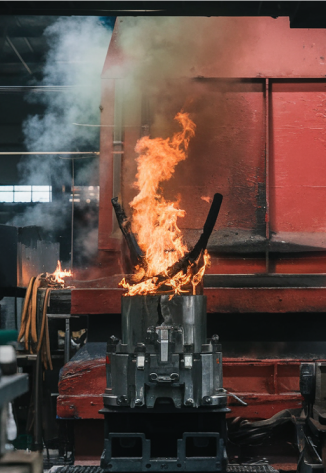The Fire Detection System employs advanced computer vision and AI technology to detect the presence of fire or smoke in real-time. By integrating this system in industrial, commercial, or public spaces, it significantly enhances safety protocols by enabling early detection and quick response to fire hazards, thereby preventing potential loss of life and property.
Fire

Dependence on manual detection for fire or smoke is inefficient, fraught with potential errors, and frequently leads to delayed reactions, increasing the likelihood of a fire's propagation.
Detecting fires in large facilities or areas with complex layouts can be difficult, especially in environments where visibility is low or when the source of fire is not immediately obvious.
Failure to detect fire outbreaks early can lead to catastrophic accidents, resulting in significant damage, injury, or fatalities.
Non-compliance with fire safety regulations can result in fines, legal liabilities, and operational disruptions, affecting overall business continuity.

To address these challenges, we have developed an AI-powered Fire Detection System that integrates seamlessly with existing surveillance infrastructure. This innovative solution uses machine learning and computer vision algorithms to monitor environments in real-time, ensuring timely detection of fire or smoke.
The system automatically identifies the presence of fire or smoke by analyzing video feeds from cameras in real-time.
Immediate notifications are sent to relevant personnel or emergency systems, enabling rapid intervention and evacuation.
Comprehensive reports provide insights into fire risks and response patterns, aiding in improving fire safety measures over time.
The system can integrate with other safety protocols and fire suppression systems for an all-encompassing safety strategy.
Variations in camera resolution and distance can impact detection accuracy, especially in large areas or outdoor environments..
Low visibility, poor lighting, or environmental factors like fog or dust can hinder the detection process.
High computational power is required to efficiently process live video feeds and run detection algorithms, especially for large scale installations.
Differentiating between fire/smoke and other heat or light sources can lead to misclassification. Minimizing false alarms is essential to avoid unnecessary disruptions and maintain operational efficiency.
Implementation of the Fire Detection System leads to a significant improvement in adherence to fire safety protocols.
Real-time detection and immediate alerts reduce the risks associated with fire hazards, contributing to a safer working environment.
Early fire detection helps in mitigating risks and preventing fire-related accidents, significantly reducing damage and casualties.
Automating fire detection allows safety officers to focus on response actions rather than constantly monitoring the site.
The system provides detailed analytics, enabling management to make informed decisions regarding fire safety improvements and risk mitigation strategies.
This website uses cookies to improve your experience. We'll assume you're ok with this, but you can back-out if you wish.